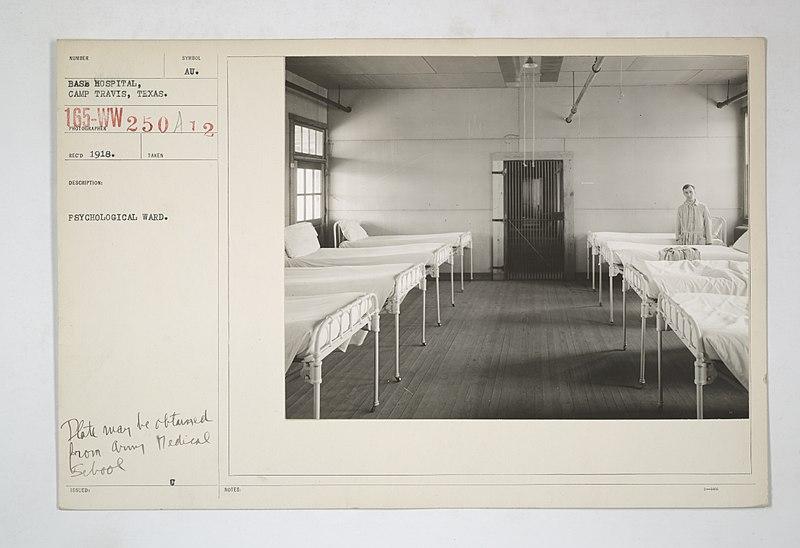Stigma Surrounding Cognitive Decline
* Warning: This page specifically talks about stigma and certain historical beliefs that can be very upsetting regarding how individuals with cognitive decline have been treated. Fine details will not be discussed; however, viewer discretion is advised if discussion of maltreatment and discrimination may be a particularly sensitive subject. *
In almost all societies around the world, individuals experiencing age-related cognitive decline were popularly treated as societal outcasts and/or abused by individuals meant to provide care, until more recently in history. (There seem to be significant exceptions to this historical trend though, as many native Asian, African, and North American Tribes do not and have been recorded as never stigmatizing or out-casting this process.) Though many potential reasons have been provided as to why this may have been the norm for so long, it most likely stems from general fear that cognitive decline was contagious, (though not in regard to the Germ Theory, as this came later) or the individual was being punished by a god figure. No matter why these beliefs and practices were in place, it was nonetheless damaging and hateful towards society and personal individuals. Harmful rhetoric was normalized, as well as general abuses of autonomy and physical practices. For instance, most age-related or general mental health "institutions" that individuals with probable dementia were housed within carried out what would now be described as crimes against humanity. Similarly, as soon as individuals may have even been suspected of showing age-related cognitive decline, they typically could easily be stripped of all their possessions as well as human rights, and then sent to one of these places. However, it was also just as normal for similar crimes to be committed within private homes by once loved ones. Sadly, even within the best institutions, conditions would not have been considered as healthy or conducive to actual care. For instance, as showcased, rooms may have been physically clean, however there was no personal space or encouraged autonomy whatsoever. Similarly, individuals would not be listened to as it was believed that they were fully gone from themselves and reality.
(Berchtold, et al., 1998; Mackey, The Hammer of Witches.)
Institutionalized and societal hatred and/or harm towards a group of individuals does not just pop up however, it begins by becoming normalized within the general community and personal beliefs. There are countless examples of individuals supporting these beliefs and practices throughout history, though some of these public displays carried more societal weight than others. For example, thousands of books throughout the centuries have been published regarding age-related cognitive decline and how this should be delt with. Though many of these novels have been largely forgotten in modern day, or never became widely popular in their time, a few works were widespread and highly regarded. A Hammer of Witches [English translation] is one of the few historical books regarding age-related conditions, then thought of as witchcraft, that was widely read and supported among different countries; the problem with this being one of the only popular novels of this sort in the 1600's, is that it is regarded (currently) as one of the most hateful and malicious novels to depict and advise what private and social reactions to age-related decline should be. This novel helped shape certain public, personal, and even certain medical ideas even hundreds of years after its publishing, especially as there was almost no pushback from other literature or philosophies at the time. Though the ideals put for in A Hammer of Witches have long since been condemned, it is of the upmost importance to not forget what society used to identify with and lawfully allow. Though it is very upsetting having to acknowledge the facts of certain areas of history, it is pertinent in order to stop it from happening again, as well as in order to acknowledge what work still needs to be done within current society.
(*Warning: Fully translated versions of A Hammer of Witches can be easily found within multiple languages; however, uncensored viewing of full excerpts and/or the entire novel is not recommended for most audiences. This novel contains numerous different subjects, recommendations, and viewpoints that can be incredibly upsetting for a multitude of reasons, regarding multiple groups of individuals. This novel is an excellent example of the cruelty that humanity can put upon itself, and how easily it can be widely accepted. If one wishes to learn more about this source's contents in an educational manner, the following trigger warnings should be noted, as they typically are not listed before the translation begins: physical, emotional, and sexual abuse, murder, mutilation, slurs, cruel and unusual punishment, unethical living environments, hate-speech, ableism, misogyny, rape, racism, and public condemnation.)
(Mackey, The Hammer of Witches.)
How is social and personal stigma combated once it has been engrained? Communication and education! No matter why a specific stigma has/had become accepted or what it is focusing on, it can always begin to be combated by simply engaging in a dialogue. Another main feature of dissolving societal stigma is opening up and providing educational resources in a variety of formats and perspectives. When education is included within these conversations, the root of fears and misinformation can also be directly addressed in unbiased ways where judgements can be examined and dissected. Whether or not an individual has been, or knows someone who has been, directly affected by age-related cognitive decline, the responsibility of checking for personal and surrounding societal stigmas remains the same. Everyone has an innate responsibility of engaging in social discussions regarding societal stigma when the occasion arises, as everyone has a part to play within everyday society. Surprisingly, some of the least listened to voices within these age-related stigma discussions are individuals who are personally diagnosed with the condition or disease of discussion. Though this may sound counterintuitive (which it is) and even unfathomable, up until very recent history, this typically wasn't even questioned. Individuals with age-related cognitive decline certainly do not all wish to share their personal experiences and perspectives within public dialogues, though many do; unfortunately though, this can typically be met with being spoken over or spoken for by others within the discussion, and even having their experiences be disregarded. Therefore, even though everyone is highly encouraged to engage in discussions targeting stigma, it is just as important to remember that people may communicate differently, so one must be aware of possibly adjusting dialogue pace and/or style; similarly, if an individual has personal experience with the topic of discussion, it is pertinent to not overlook expressions and points made. The interview video to the left highlights a perfect example of how social dialogue of this nature can be built up and continued. Similarly, it addresses some specific issues individuals face when trying to add their personal experiences to a larger dialogue and how it can be difficult communicating with individuals who have no personal experience in the matter.
(PBS NewsHour, 2017).
Why should discussions about health and aging be open to all ages, within the appropriate contexts? It's simple, these topics affect everyone, no matter what period of life they are in; similarly, questions, potential fears, and interests regarding general health and aging begin within very early childhood and don't just spring up once adulthood has been reached. Further, if a healthy dialogue and education regarding stigmatized topics begins earlier in life, then there is less chance of future, significant fear(s) and stigmatizing beliefs regarding the subject. Young adults and children are just as much a part of society as adults in any life stage. Therefore, it's very common that individuals of all age groups interact at least to some extent, on an almost daily basis. It should be noted that trying to create a dialogue in every scenario one encounters is not what's being encouraged; instead, it's encouraged to participate in healthy discussions and even educational moments/events when the situation arises. The interview to the right is a fantastic example of what healthy and educational discussions about aging and health differences can look like between individuals within vastly different age groups. Similarly, the video is a great example of how conversations can be, and usually should be, shaped accordingly for whoever the participants and/or audience is. Overall, the first step in destigmatizing a subject is to be able to engage in healthy conversations about it, whether that be in public or private, and further educate yourself on the current research, history, and personal experiences regarding the matter.
(Alzheimer's Society UK, 2019; NIH, 2024; NIA, 2024).

